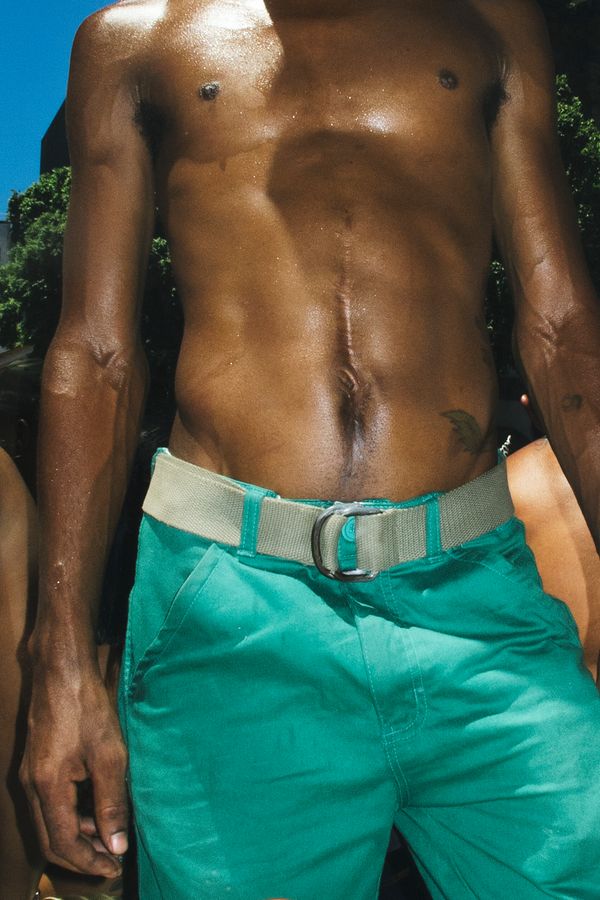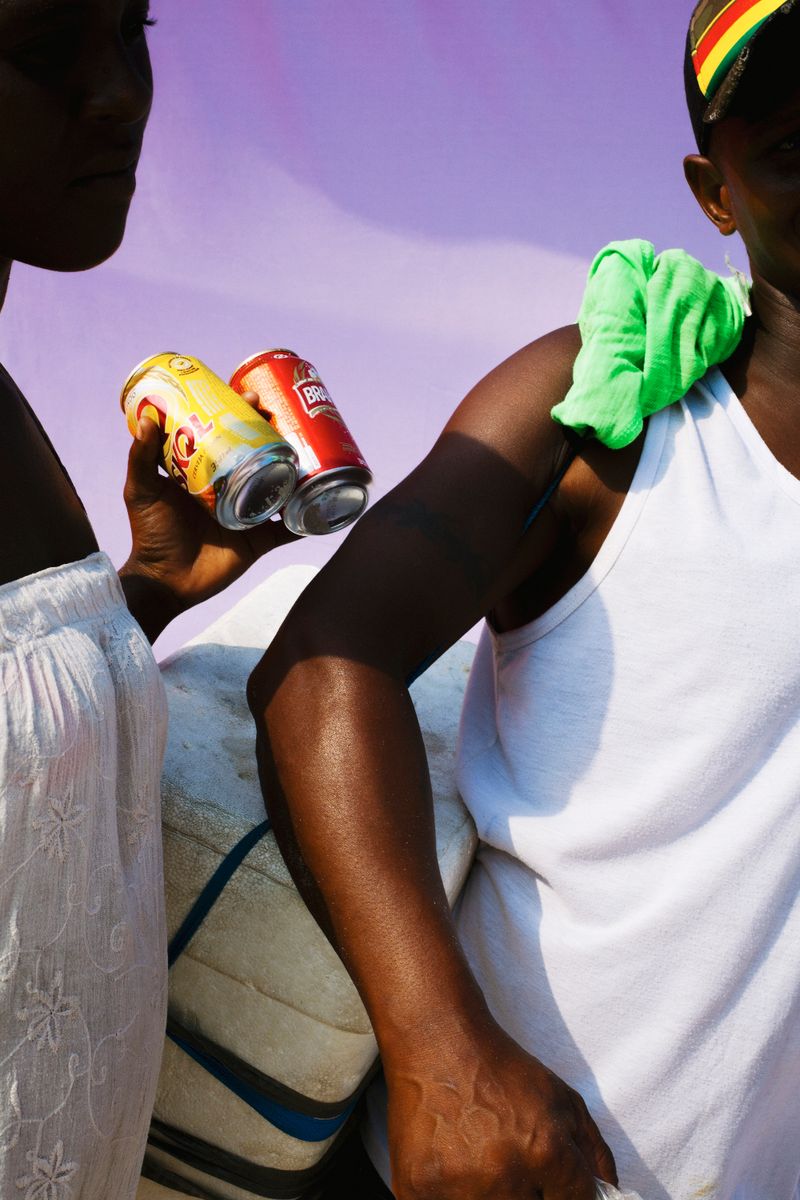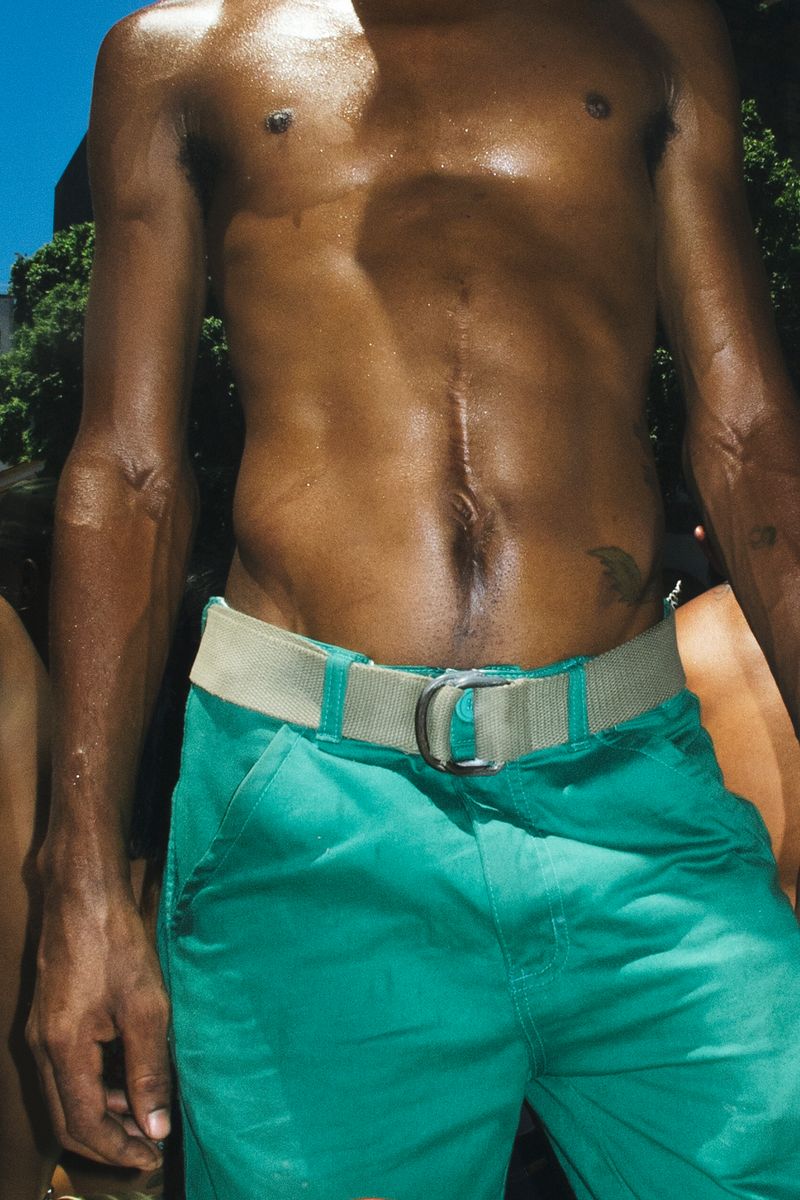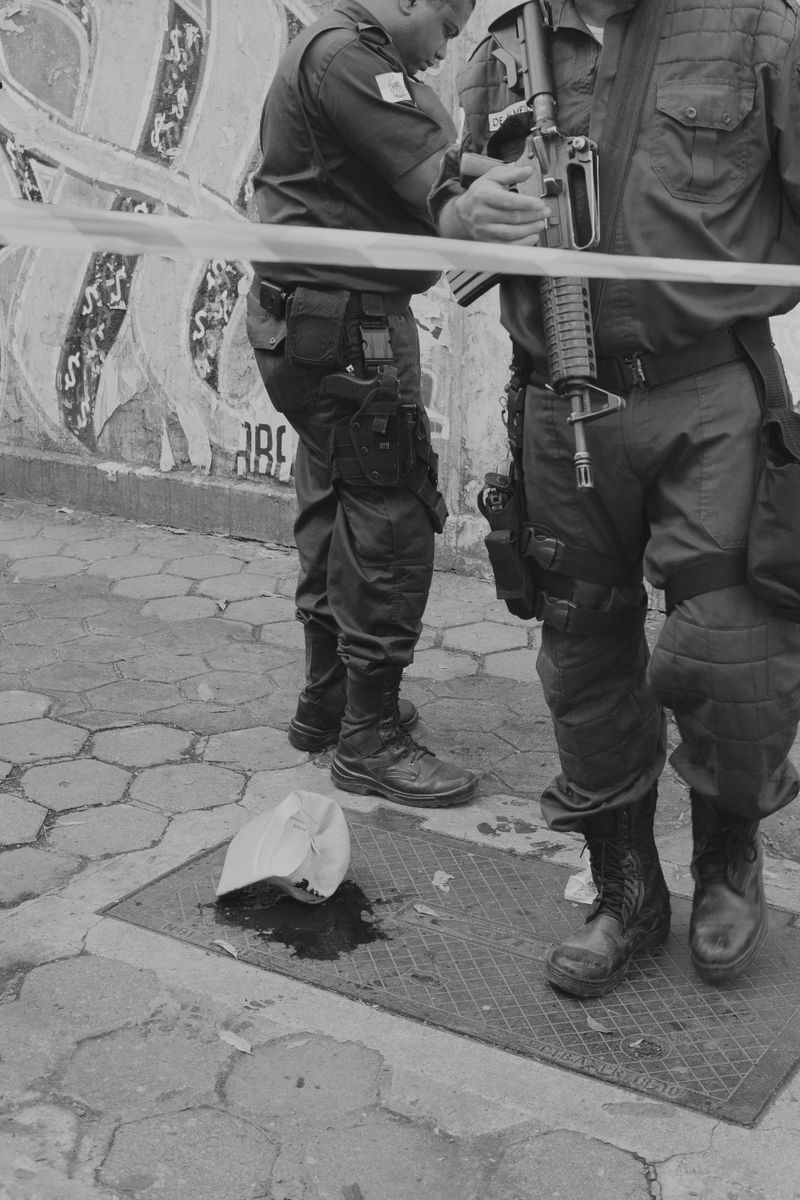Finding Colonial Segregation in Rio de Janeiro’s Favelas
-
Published10 Jan 2018
-
Author
In her series, Land of Black Milk, Austrian photographer Stefanie Moshammer delves into the complexities and dualities of life in the favelas of Rio de Janeiro.
In her series, Land of Black Milk, Austrian photographer Stefanie Moshammer delves into the complexities and dualities of life in the favelas of Rio de Janeiro.
Rio de Janeiro isn’t one city filled with one reality. It’s a condensed place where you may find multiple truths, torn between a heavy past and an uncertain future. In here, favelas are everywhere, their urban presence is found in the heart and the peripheries of the city, as sharp as its asphalt. Yet, this existence is vulnerable and powerful. The favelas’ identity is constantly transforming to the results of its own laws.
Trying to find beauty and cruelty is to face seduction and corruption, with an occasional gunfire shot in the background. “You are some kind of wild, if you are from here” says Stefanie. In here, there is no sophistication, yet true beauty is believed to be found. Land of Black Milk invites you to reflect upon the virtues of good and bad, truth and fiction, leaving everything to one’s interpretation.
Where did the title of the project, Land of Black Milk, come from?
It’s an oxymoron in a way. It is for me something that describes Rio de Janeiro in a manner that portrays the contrast of not really knowing how to explain the place because of its paradox. Also, the title hints at what is still going on in the city in terms of the indirect (and direct) racism that exists there.
Back in the day, the city was called Black Milk since white Brazilians mostly had African slaves in order to feed their babies with their milk. To understand today's culture in Brazil, I needed to understand its history. Brazil has such a heavy past with the history of colonisation. The Afro-Brazilians that live in Rio today are mostly located in the favelas. It seems like history from the colonial times is still somewhat present in today’s reality.
You have documented Rio de Janeiro in a style that is colourful and joyful at times and one that reveals a different perspective of the city than. Were those your intentions?
For me, Rio exists in many different colours and shapes; it isn’t so much one city as different worlds with multiplied realities and the space in between. My aim wasn’t to say: this is Rio de Janeiro. It’s my kind of Rio de Janeiro, and I’m sure everybody sees it differently. Land of Black Milk springs from my experiences and is a conglomerate of my observation and personal impressions.
Each part of the city exists on its own - I see Rio as many various cities, more than one place, and it’s very much dependant upon what kind of people you meet and spend time with. I didn’t work with a fixer while in Rio de Janeiro. All of my approaches come from personal experiences, depending on who I met. I believe, if you place yourself in a location with “real people/settings”, you can’t plan everything. Things arise while being present.
Through meeting different people living in favelas, I gained access to certain areas. To access the favelas I needed to reach out to the local criminals. There are five big criminal organisations. The only one I got in touch with were members of Comando Vermelho (CV): one of the main ones. Every organisation marks its territory, so you immediately know which belongs to who. There are hundreds of existing favelas still present in Rio, and the safety of each one depends on where they are based. Some are pacified by the police, some aren’t. For instance, I visited Complexo do Alemão, Santo Amaro, Madureira, Rocinha, Vidigal, and Cantagalo, yet, I did not feel unsafe.
You talked about not wanting to fall into stereotypes while photographing in Brazil. How did you find this experience? How did you channel this conscious decision in your photography?
I think we all have stereotypes of certain places. And this is the challenge for a photographer – to break these stereotypes, or to make use of them and to recreate them. Portraying a place is always a mixture of our perceptions and our fantasies. Once I get to a place, my perceptions rival the desire to provide a personal portrayal of where I am. I find it important for the reader to have questions and doubts though.
The use of colour in your narratives seems to play an important presence, yet Land of Black Milk also introduces black and white. Why is that so?
Colour plays an inherent role because it helps to navigate and narrate the story and also create the dynamic and atmosphere of a place. When you think of the favelas, people have mostly something negative in mind. Not that that is necessarily untrue, yet for me, it was important to switch it and show a more vibrant, dynamic, and colourful way of translating this place. I didn’t want to romanticise it though; that’s why I included the black and white images, which give a character of a “reportage”, showing hints of violence. Through embracing a series with different typologies, I’m able to create an interplay and different gradations of story lines.
You recently published a book with this work. Can you tell us about how you have edited the book?
I worked together with designer Federico Carpani and the book was published through Skinnerboox. We tried to find a way to translate the project into a book, related to the title and the content, in terms of the diversity and the contrast. The book is split into three parts. The first part shows the photos full spread and always on the right side with the white pages on the other. You then come to a black and white part and then the third section features photos full spread with black pages. Then there is the text, written by me, going through the whole book. The text is not so much describing it, it’s more a poetic way of trying to underline the images.
-------------
Stefanie Moshammer is an Austrian photographer based in Vienna. Her work plays on the the boundaries between documentary and conceptual photography. Follow her on Instagram.
Verónica Sanchis Bencomo is a Venezuelan photographer and curator based in Hong Kong. In 2014, she founded Foto Féminas, a platform that promotes the works of female Latin American and Caribbean photographers. Follow her on Twitter and Instagram.





